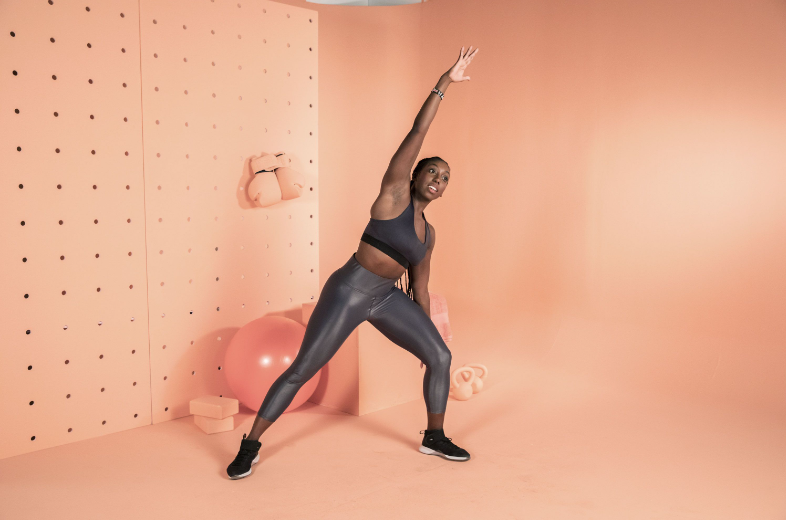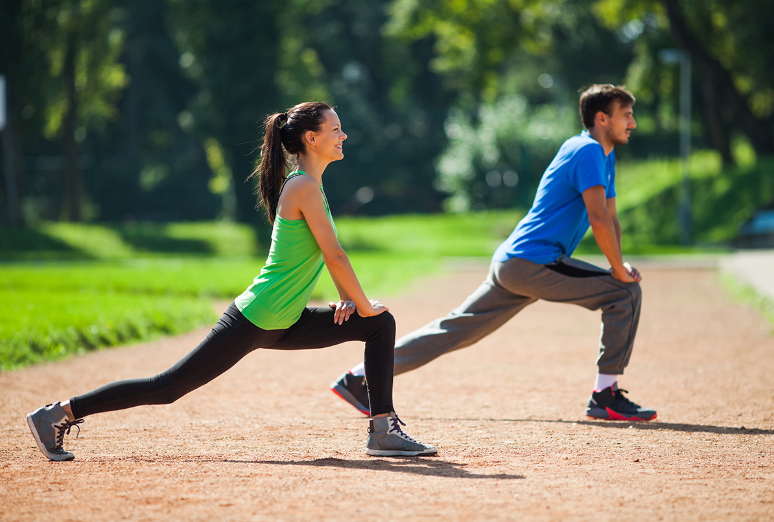The purpose of warming up before exercise is multifaceted and very important in getting used to it. The warm-up consists of several movements, such as stretching your thighs, rotating your head, and rotating your shoulders. Aside from being an additional part, the benefits of warming up when exercising are also very diverse, not just for preventing injuries. Ironically, many people still make it easy for themselves to warm up and even choose not to. Even if the benefits of warming up are numerous and are not only felt during training.

The importance of warming up before exercise
Ignoring the pre-workout warm-up is equivalent to eliminating your concerns about the comfort and safety of the workout. Can you imagine the risks of gradually avoiding the introduction during exercise? One of the reasons people are lazy about warming up isn’t because it takes so long. It’s because they need to learn how to warm up properly.
There have been classes in sports warm-ups since we were in school. Despite this, you can get information and examples of movements from various sources such as websites or YouTube channels. It seems unwise to underestimate heating because you are too lazy to find information sources or do it.
warming targets
Do you know what the purpose of the pre-workout warm-up makes this activity expert-recommended? There are at least three objectives behind these activities, including:
The purpose of the pre-workout warm-up is to prepare the muscles.
Sport is no ordinary physical activity. A single exercise movement can stimulate contractions in multiple muscles in the body. It is feared that exercising without a warm-up can shock the body because it is not in a state of readiness. Don’t be surprised that many people complain of pain after running because they don’t warm up. Ideally, you should warm up for about 10-15 minutes.
The purpose of warming up before exercise is to improve performance.
Warming up before exercise is also suitable for improving athletic performance, no matter what sport you play. If you can usually only last 10 minutes, the duration will be longer after the warm-up. This condition occurs because the blood flow system is smooth after heating. When blood flow is soft, the body becomes more relaxed. Your body muscles also work according to your portion.
The purpose of warming up before exercise for mental preparation
Many people are too lazy to exercise for too long because they are mentally unprepared. To avoid these conditions and calm the mind, warm up while exercising. Warming movements are said to help improve blood flow to the brain. If you are mentally in good shape, you will be confident performing various training moves. Mentally, too, you will no longer shy away from doing sports in the future.
The benefits of warming up before exercise
After knowing the different heating purposes, are you still hesitating to do it? If you want to save time, you can exercise at home to use the travel time to warm up. More information on the benefits of heating can be found below:
It helps to maintain endurance during sports.
The warm-up is not an arbitrary movement, as each activity has specific benefits and functions. Did you know that warming up significantly impacts physical endurance during exercise? The warm-up movement helps the body improve blood circulation while increasing the body’s oxygen supply. As a result, the body becomes more robust and does not tire as quickly when exercising.
Helps improve posture
Warming up before training is essential because of its various benefits that are very good for the body. One of the benefits of warming up is improving posture due to everyday activities, such as working on a computer. If you have these symptoms from the start, you should warm up before exercising. Is it better late than ignoring it altogether?
Good for increasing body flexibility
Sport is not only synonymous with training strength or speed. The evidence is that many movements or marks focus on maintaining body flexibility. The most famous example of flexibility is yoga. Even though yoga isn’t a heavyweight exercise like lifting weights, it’s still important to warm up. Then what is the purpose of warming up before this sport? Warming up before yoga helps increase body flexibility, which is suitable for both beginners and experts.
Avoid injuries while playing sports.
Muscle injuries or cramps during exercise are common and generally occur when you don’t warm up. Warm up properly and correctly with every workout to avoid severe or minor muscle injuries. Imagine how painful it is when you experience muscle spasms or muscle tears. Instead of reaping the benefits of exercise, an injury forces you to take a break from various activities.
Start blood flow towards the muscles.
Muscle pain after lifting weights can be one of the side effects because you don’t warm up while exercising. Although it may seem trivial, warming up helps to improve blood flow to the muscles. However, the warm-up you do can also be natural treatment therapy after stimulating muscles to contract during exercise. So don’t hesitate to warm up.
Warming Up Before Exercise Reducing the risk of back pain and headaches
Anyone can experience back pain and headaches, especially those who don’t get enough rest and eat well. Proper heating can relax your brain and back. The warm-up movement is also effortless, so certain body parts are not injured.
Care for joints and bones
The benefits of warming up while exercising are related to maintaining healthy joints and bones. Some warm-up moves help the body lubricate the joints, allowing you to move more flexibly during sports and activities. So, in addition to regular milk consumption, which is good for the bones, also eat enough iron-rich foods. You can combine warming up with exercise afterwards to protect your bones and joints from staying healthy into old age.
Provides the nutrients needed by the muscles
Little warm-up socialization leaves many people unaware of the benefits of this activity. However, the benefits of warming up before a workout are numerous, including increasing the supply of nutrients to the muscles. Adequate nutrition in the forces indirectly helps the body to avoid muscle injuries during sports. Even if it’s brief, make it a habit to do a series of warm-up moves before exercising or lifting weights.
Warming Up Before Exercise Maintain a stable heart rate
Another benefit of warming up before a workout is keeping your heart rate in line. The heart is the most affected organ when a person exercises—exercising without warming up increases your risk of palpitations, things you can avoid. Did you know running at high speeds on a treadmill without warming up can affect heart health? You have the disruption even 15 seconds after running.
Warming Up Before Exercise Helps control breathing
In addition to the heart, other organs are severely affected during sports, namely the lungs. When your body moves, the lungs release carbon dioxide and breathe in oxygen at a faster rate of time. Those who do not warm up before exercising are at high risk of shortness of breath. In addition to learning breathing techniques while exercising, familiarize yourself with all recommended warm-up moves. The warm-up movement you do needs to be a balance between your upper body and lower body.
Keeping your body healthy through exercise is the right decision, especially when balanced with a healthy diet and adequate sleep. Make it a habit to prepare your body and mind by warming up before you exercise. The warm-up moves aren’t as complicated as the core exercise moves. You can even learn it in no time. Make it a habit to warm up before any exercise or sport to prepare your muscles and reap many benefits of warming up while exercising.
